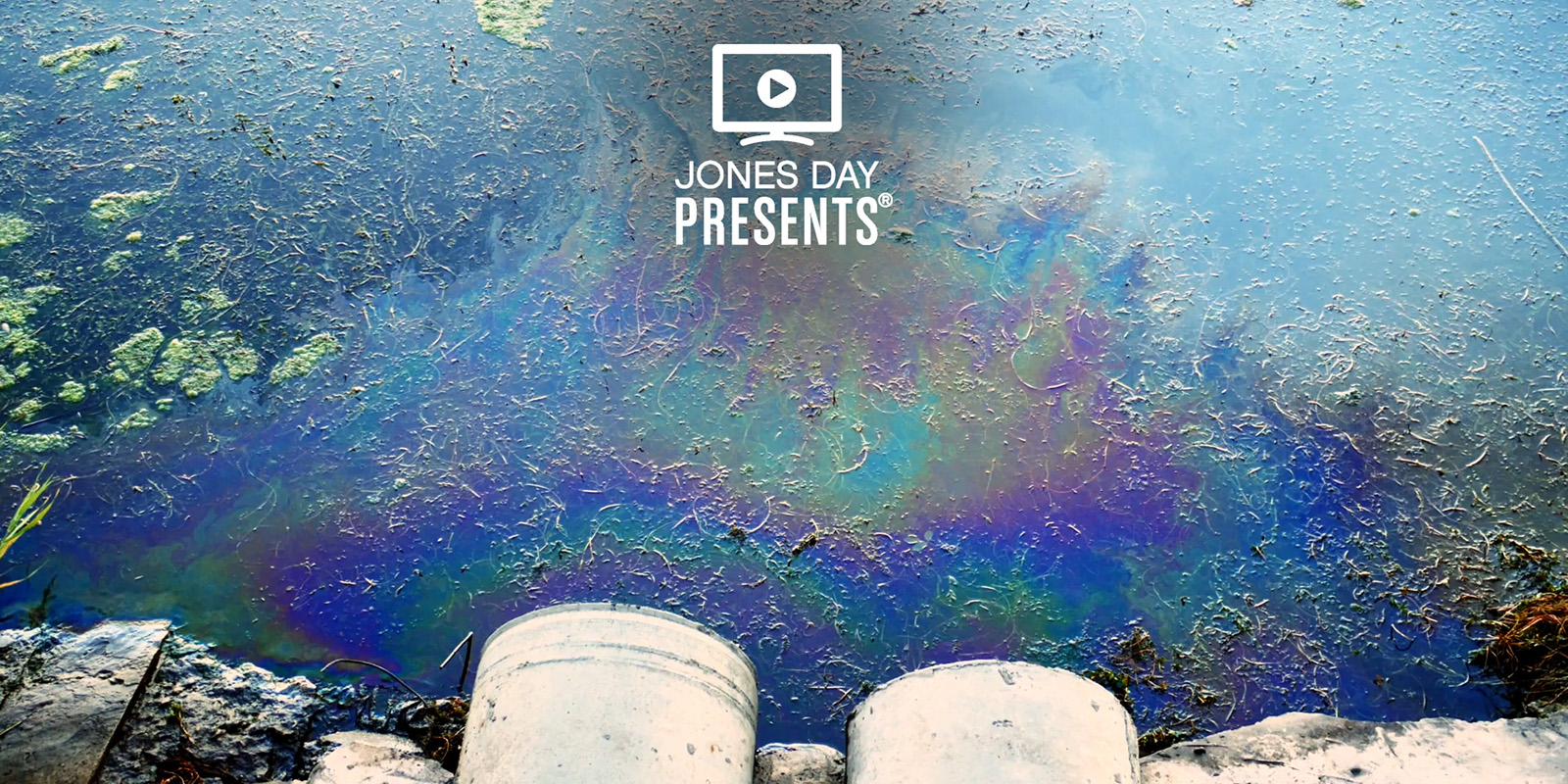
JONES DAY PRESENTS®: Environmental Agencies, Superfund Cleanups, and Managing Enforcement Actions
Partner Jane Borthwick Story talks about EPA Superfund sites, sorting out a company’s responsibilities related to a cleanup, how previous transactions can relate to liability, and the value of a long-term relationship with enforcement agencies.
A full transcript follows:
Jane Borthwick Story:
A Superfund site is a site that is on the national priorities list set by the US Environmental Protection Agency that is designated a contaminated site that's set for cleanup. What parties can do if they get a notice that they're potentially responsible party at a Superfund site or a circle of site, a lot of times people think about immediately, okay, what is my nexus to the site? And they try to get information from whether it's the federal government that's giving them the notice or a state or a private party, try to get information from them about what is the allegation? Did I actually physically operate on the site? Did I send materials to the site? If so, when? What were they? What volumes? That kind of thing. People think about that sort of initially.
Other things that people may not always think about are your insurance policies. Do you have insurance that might cover contamination at a site? And you may think, okay, well, a lot of times there's pollution exclusion clauses, and general commercial policies, but with a statute like CERCLA, the liabilities can go back very, very far. So it may be that releases occurred prior to the time that the pollution exclusion was common in insurance policies. So it's worth looking to see if that's the circumstance in your case and think about that and put your insurers on notice.
Another thing that people may want to think about is, well, how did I acquire the company that is alleged to have caused the release? There may be a series of transactions that occurred between when the release happened and today where it may be worth looking back at those corporate transaction documents to see, did you acquire the liabilities or just the assets of that company? Even if you acquired the liabilities, did you have some sort of an environmental indemnity where the company that you were purchasing this entity from was giving you some sort of environmental indemnity because of issues that may have been known at the time? So it's worth looking back at those to see if there may be other protections or avenues to address what cleanup costs may be.
The circle matters can go on for a very long time, just because there's a long process of sort investigation and remediation and operation and maintenance. So it is something that can go on over the course of many years. And then hopefully, if you're involved in sort the litigation side or trying to come to agreement with a state or federal agency to address contamination, hopefully that can be cabined to a shorter time period, but the actual sort of work of managing the cleanup can go on for quite some time.
When you have very strong environmental policies that are being put in place, whether it's at a state level by a governor, or whether it's at the federal level with a Presidential administration, that can lead to some heavy enforcement authorities that people bring to bear. And there's also a lot of complexities with emerging contaminants that are being regulated in a way that had not been known in years past. Things can be very adversarial, but when you're dealing with state environmental agencies or the US EPA, clients are going to be repeat players with them, and they're going to need to continue to work with them in the future to get new permits or permit renewals. There may be regular inspections that are just part of the normal course understanding environmental regulations. And so you'll have the state or federal inspector coming out multiple times.
You're going to need to work with and be on good terms with the state or federal environmental agency going forward. So you just want to be mindful of that ongoing relationship while at the same time, not being a pushover and wanting to be protective of the client's interests and wanting to make sure that there's not something that's sort of overly penalizing going on or inappropriately and unfairly penal going on.
Sometimes these are very, very intrusive in terms of looking into an industry's operations and a lot of follow up questions and back and forth with a state or federal agency. And so you have to be mindful that you're dealing with very busy environmental professionals at various plants, and they have to do their day job and also be involved in what's going on, on the enforcement side because that's going to have direct implications for what's going to be required going forward in terms of injunctive requirements and things like that. And so you just have to work sort of hand in hand with them and understand what's going on at the plant level and how the implications of the enforcement itself are going to come into play on sort of day to day work going forward.


